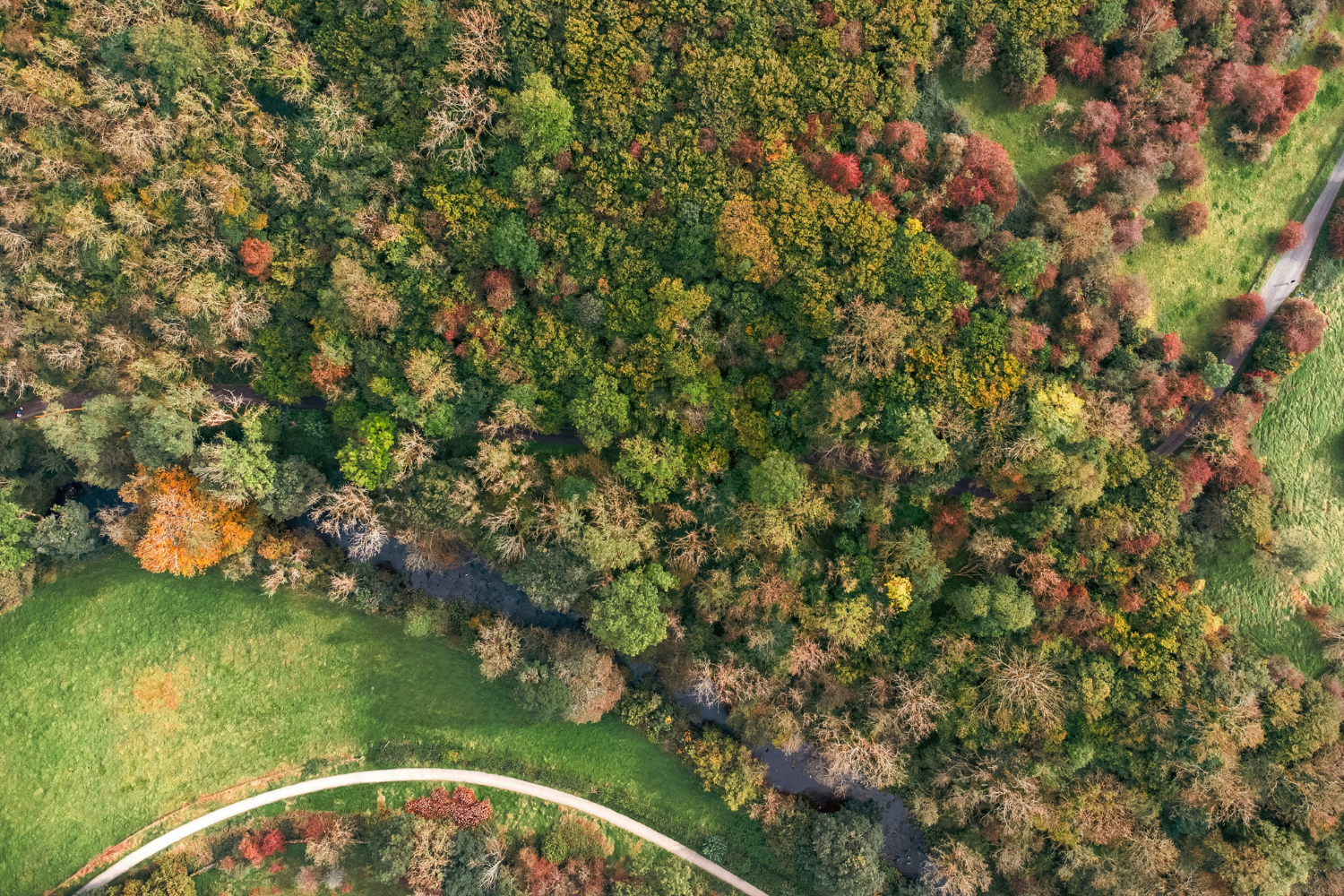The soil beneath our feet and biomass on lands are a powerful carbon sink, second only to our oceans. Farms, forests, wetlands, and other land-based systems remove and store 25% of annual CO2 emissions from the atmosphere, and, currently, almost all of carbon dioxide removal (CDR) comes from these ecosystems. Yet as emissions keep rising, it’s becoming harder for these systems to keep pace and hold on to carbon — especially in places where poor land management has degraded agricultural soils and increased the risk of uncharacteristic wildfires in forests.
With a majority of US lands devoted to agriculture and forestry — 52% for agriculture and 33% in forests — the potential to optimize CDR through sustainable management is a significant and largely untapped opportunity. Early projections suggest scaling some agricultural land-based CDR pathways to their full potential could remove up to 380 million tons of carbon dioxide per year, while reforesting ecologically appropriate acres — up to 148 million across the US — could capture almost 500 million tons of carbon dioxide per year. However, uptake of CDR practices across US farms and forests has remained relatively low, despite recent increases in public investment into MRV and climate-smart agriculture and forestry, alongside rapid proliferation of private carbon markets.
In 2017, Carbon180 set out to uncover the key barriers land stewards face in adopting carbon-sequestering practices and systems, resulting in our Leading with Soil report. Farmers, ranchers, and technical service providers were clear: Lack of technical assistance, mismatched financial incentives, and incomplete research in soil carbon were key constraints. Since then, Carbon180 has focused on developing policies to address these challenges to support deployment of land-based CDR. Now, truly activating agriculture and forest lands as carbon sinks will require the CDR field to rethink the support that land stewards require to implement holistic land management that both removes carbon and builds a climate-resilient future. Over the next year, the Carbon180 team will be working to:
- Center land stewards and their needs in CDR,
- Determine the right tools and metrics to evaluate land-based CDR,
- Develop a vision of the CDR potential and geographic reach of multiple land-based CDR pathways, and
- Identify key policy interventions needed to unlock transformation in land-based systems.
Below, we’ll dig further into each area of focus and existing gaps in the CDR landscape.
Centering the voices of land stewards in CDR
Scaling land-based CDR depends on millions of individuals adopting and sticking with new land management practices and systems. The US is home to more than 3.3 million agricultural land managers, and over 2.7 million parcels of forestland owned by non-industrial private citizens. Effective carbon management will look different on each of these lands, and we must meet land managers where they are at to truly understand the challenges they face and how carbon management can best align with their unique operational needs.
While carbon removal as an industry is new, many land management systems that sequester carbon are rooted in Traditional Ecological Knowledge (TEK) — a cumulative body of knowledge, practices, and beliefs developed and stewarded by Indigenous and Tribal communities to preserve the holistic management of agricultural and forest ecosystems. Historically, these voices have been excluded from and deprioritized in agricultural and forestry policy, to the detriment of individual producers, our soils, our forests, and the food and agricultural system overall. In order to transform policy to center equity and justice, the needs and knowledge of Indigenous, Black, and historically underserved land stewards must be uplifted.
Determining what “good” land-based CDR means
The metrics applied to technological CDR, which focus tightly on tons removed, cannot account for the total impact of land-based CDR. For instance, a direct air capture project might be scored on how long it can seal CO2 underground, known as its “permanence” and by how protected that carbon is from reversals, known as “durability.” But land is ruled by natural fluxes of the global carbon cycle, which are increasingly affected by climate change and a different definition of these terms is needed for land-based pathways. That definition should consider and value the social dimensions and processes of both building and maintaining carbon in agriculture and forestry.
Evaluation of land-based CDR should span beyond carbon sequestration to also include the myriad of ecosystem and community benefits delivered. For example, key soil carbon and forest management practices are linked to improved water retention, nutrient management, biodiversity, and many more environmental benefits. These co-benefits are often more important to the land steward because they translate to more resilient and self-sustaining lands, which decreases operational costs and allows for quicker recovery in the wake of climate-related events.
Matching the diversity of geographies and environments to the menu of pathways
Goals for scaling land-based CDR pathways must account for the environment and ecosystem for which each pathway is appropriately suited. The varied patchwork of climates, regions, production systems, soil types, forest types, management regimes, and overall variability across the US will impact the CDR potential of each pathway, making a “one-size-fits-all” approach impractical. For example, only 29% of US studies on cover crops, a practice touted for its carbon sequestration potential, showed an increase in soil carbon, with results depending on the type of cover crop system used and region of the country.
Digging deeper to unlock transformation in agriculture and forestry
Any change in management practices poses a risk to land stewards, who’re already subject to slim profit margins. Policymakers can ease the way by providing safety nets to land stewards who employ carbon-storing systems, and supporting access to new markets for agriculture and forestry. Public support — in the form of incentives, specialized training, or even paying premiums for goods grown with carbon-storing practices — may help to de-risk land stewards’ adoption of land-based CDR pathways.
In some cases, simply improving education on existing programs or expanding a program’s capacity may go a long way. For example, even though forest conservation programs could help alleviate financial burdens and address landowners’ goals to protect nature, a relatively low percentage of forest owners take advantage of these programs and associated technical assistance. By pulling on the right policy levers and providing adequate funding, the US Department of Agriculture (USDA), including US Forest Service (USFS), and Congress can create a system of public support for individual land stewards while clearing a path for science-backed private investment.
Meanwhile, many national forests are experiencing unprecedented wildfires, and the time- and cost-intensive response required often puts conservation and restoration activities in the backseat. Many of the problems facing national forests today stem from ill-informed policies impacting management decisions. That notably includes management for fire suppression and timber production. We’re now seeing a shift to center ecosystem health when making management decisions. For example, the USFS is currently working on a plan that would conserve old-growth forests, which are more resilient to stressors (i.e. wildfire, disease) and capable of storing exponentially more carbon than their younger, smaller counterparts.
Activating agricultural and forest lands as a carbon sink
Unlocking US agricultural and forest lands’ true potential requires a drastic shift in priorities and support, toward holistic land management that maintains and builds carbon alongside production and environmental benefits. This year, Carbon180 jump-started this work by centering the voices of land stewards; we are partnering with producer-facing organizations across the US to host roundtables to get a better understanding of the unique challenges land stewards face when implementing holistic land management. Additionally, we’ve convened a Steering Committee to uplift the leadership of Black, Indigenous, and people of color in agroforestry. We’re collaborating with this Steering Committee to center and learn from historically underserved communities to scale this CDR pathway in a just, equitable, and highly accountable way.
In parallel, we are exploring the impact of different land-based CDR pathways by interviewing academic experts across a variety of land-based CDR pathways to get a better idea of which pathways make the greatest CDR impact in different US regions, plus the important community and ecosystem benefits they provide.
Over the next year, Carbon180’s land team will build on this momentum, guided by the above four focus areas. We’ll develop a transformative vision and a set of innovative policy proposals that account for existing incentives and address remaining gaps to build a roadmap for scaling high-quality, equitable, and just land-based CDR across the US.
Edited by Tracy Yu. Image by Benjamin Cheng.

